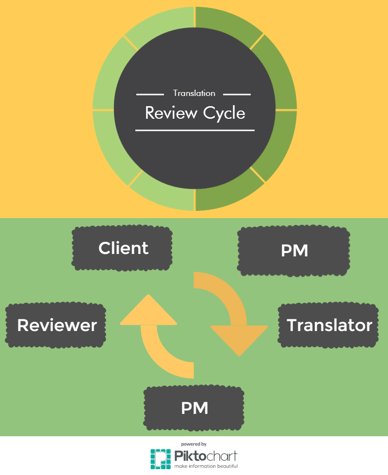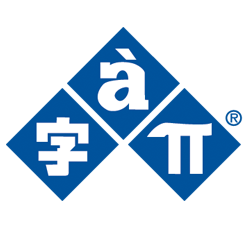June 10, 2024 / by the SimulTrans Team Estimated read time: 8 minutes
Quality Assurance: When Translator and Reviewer Collide

The wonderful thing about language is that we all speak it in our own way, we have certain words or phrases that we as individuals are more inclined to use compared with others. A translation review will cause some of these preferences to surface making both parties aware of the differences in their native language, and begin to consider what will be best from a customer’s perspective… But it can be time consuming to say the least… so many opinions, so little time.
Having a review stage is therefore an essential part of the translation quality assurance process, but being in the middle of a scuffle between your translator and your reviewer can make things less than plain sailing.
Understanding the Review Process from Both Sides
Understanding the root of any disagreement is about knowing where each person is coming from, not necessarily who is right or wrong. Being aware of the difference between the focus of a translator and reviewer will help in making the quality assurance step that little bit less tasking.
From the translator’s perspective:
The job of a translator is to take a text and render it from the source text into the target language. Due to the complexity of language and the volume of industry specific terminology, a translator will usually specialise in one or two fields, mastering the commonly used terms and becoming skilled in a particular subject matter. The translator will then translate a given text, adapting it for the target audience but always adhering to the source text and the message it portrays. It goes without saying that a translator’s focus will always be on the language, however a translator should always bear in mind that a sentence that is linguistically perfect may still be wrong for the target audience, which is why the review process is crucial in ensuring optimum translation quality.
From the reviewer’s perspective:
While translators focus on language, an in-country reviewer comes along with the entire company’s message and brand image in mind, something that is quite difficult for a translator to achieve fully, even with the use of glossaries or style guides, because even though they may be familiar with your company, unlike your chosen reviewer, they are not fully immersed in your brand on a daily basis. Familiar with your company’s customers and the audience you are targeting, a reviewer will therefore have more insight on the type of language which should be used. They can therefore leverage their knowledge and expertise of your industry and its products or services, making suggestions on how the terminology can be adapted or improved to appeal more to the target audience. The focus of the reviewer therefore, is primarily on the company and its audience.
Break the Review Cycle, Keep the Peace and Increase ROI
Re-work is undeniably the main culprit for driving up localization costs, a lot of which is down to reviewers with a lack of expertise and no clear direction on the feedback they should be giving. Luckily, with a little mutual understanding between the translator and the reviewer, re-work costs can be reduced significantly. Let’s have a look at how to streamline your reviews and inject a little happiness into the quality assurance process… before you know it, you’ll all be the best of friends!
- Make sure that your reviewer is given a precise job description which includes exactly the type of feedback they should give: For example; instead of focusing on the style of language that they would use in comparison to the translator, they should only make changes if they feel it will make the translation more appropriate to the market.
- Instead of overwriting the translator’s work, make it clear that all changes, preferential or corrections are annotated into the text: This allows for a direct comparison between the original translation with the suggested translation, facilitating workflow and therefore reducing time and cost.
- Colour code preferential changes vs. corrections: This helps determine an exact ratio between preferential changes and actual errors.
- Recruit people with the right expertise and adequate availability, to ensure they have the time to give quality feedback: Remember that not all feedback is quality feedback. A reviewer that looks at a text with the intent to provide just any feedback because they feel they have to, but without relevant expertise, will just cause unnecessary work for everyone, and risk lowering translation quality.
- In order to create a common understanding between both parties, find a way of building communication between the translator and reviewer during the review process: This will allow them to exchange opinions and suggestions and eventually come to a mutual agreement, facilitating future projects.
- Try finalising a clear, written review process that the reviewer must stick to and that everyone can refer to in times of confusion: Having things in writing is a great way of keeping everyone on the same page (no pun intended!).
- You can’t go wrong with a good, old fashioned glossary: Ok, don’t necessarily quote me on that, but glossaries and style guides help… a lot. Finalising a clear list of predefined, approved terms or phrases and how they should be translated, will guide both the translator and the reviewer, making things a lot more black and white.
- Stick to one reviewer: It’s understandable when people go on holidays or are sick, that the show must go on, but try to keep one reviewer per language where possible. Having several people to review projects will cause inconsistency and ultimately, a lot of confusion and frustration for the translator when, for example, terms that were previously approved by the previous reviewer are now being questioned. Getting just anyone in the office to review a project because the job needs done, will only lead to crossed wires and extra costs.
- When in doubt, have your translation agency do a third party review: If in country reviews are causing you headaches, pass the work over to your translation company who will hand the translation to a third party translator for review. A third party reviewer won’t have the same company knowledge as an in house reviewer but as a native speaker with industry expertise, they will still be able to give relevant, expert suggestions, allowing you to take a step back and rest assured that your translation quality is being taken care of.

Written by the SimulTrans Team
The SimulTrans team has been providing localization solutions for international businesses since 1984. Our team is a diverse, engaged, multinational group of industry-expert translators, reviewers, project managers, and localization engineers. Each team member is devoted to collaborating, locally and globally, to maintain and expand SimulTrans’ leadership in the language services sector.




